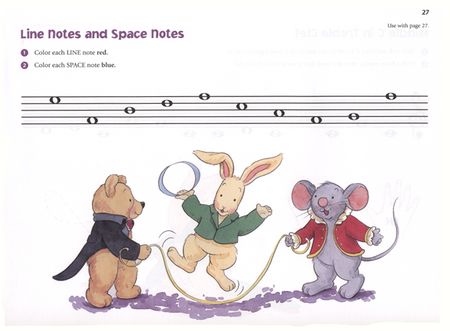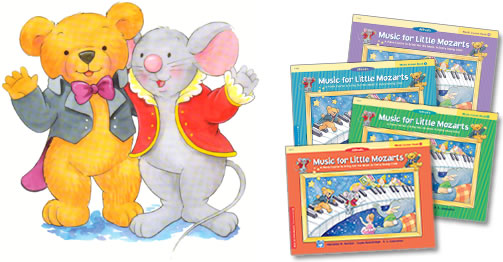E.L. Lancaster: Special Considerations In Teaching Piano to Young Children
Teaching piano to young students (ages 4–6) differs from teaching piano to average age beginners (ages 7–9). The following principles will aid the teacher in working with early childhood students:
- The materials used in the lesson should be much less performance-oriented than those used with average age beginners. Young children should be introduced to a variety of music activities that provide a general introduction to music.
- The materials used in the lesson should take into account the small hands of the child. Very young children should play three-note chords or music with many independent voices split between the hands.
- Students should experience music and the keyboard before being introduced to notation and staff reading.
- Young children love repetition and they are accustomed to trying over and over again. They can repeat songs that they like for weeks and even months.
Parents play a very important role in music lessons for young children. Lessons are a total partnership between the child and the parents. Some teachers encourage parents to attend the lessons with children. Even if parents do not attend lessons, they must keep in close contact with the teacher and share in the learning process at home. When parents attend lessons, they can aid the child in locating the appropriate materials in the lesson and have a better understanding of how to help in practice at home. As a minimum, during practice time, parents will have to guide the order of things to practice and read directions to the student. The practice time is an important time for sharing and bonding between parents and the child.

With these principles in mind, Christine Barden, Gayle Kowalchyk and I wrote the Music for Little Mozarts series. It combines general musicianship activities with those that develop performance skills at the piano. Students join Beethoven Bear, Mozart Mouse, and the music friends as they learn about music – following their adventures from the Play Room and the Music Room to their Piano Lessons and the Recital Stage. Singing and listening skills are developed simultaneously with an appreciation for a variety of musical styles.
All keyboard performance activities are introduced in the Music Lesson Book and reinforced in the Music Workbook. The music takes into account the physical limitation of the young child’s small hands and short attention span. The artwork and song lyrics appeal the child’s imagination. When studying the piano performance pieces, the teacher and parents should discuss how the artwork and words for the music relate to the musical concepts being studied.

The Music Discovery Book supports the activities in the Music Lesson Book and Music Workbook through listening, pitch matching, singing, and movement activities – often away from the keyboard. At the same time, students are introduced to compositions by major composers throughout the history of music.
Historically, pre-school music instruction has been conducted in groups often with parents attending and assisting students in the lessons. This approach is very effective as young students enjoy the interaction with peers. Parents enjoy the opportunity to share these experiences with their children. Such music classes typically focus on general musicianship activities using the keyboard as a tool to aid in musical learning. Music for Little Mozarts works well in a group situation through teachers will find it equally effective in private lessons. When teaching young children privately, it is very important that the lessons include a variety of activities that get the student away from the keyboard. The listening and movement activities contained in the Music Discovery Books should not be neglected in private lessons.
The entire Music for Little Mozarts series was designed to develop creativity in the young child. The story of Beethoven Bear and Mozart Mouse continues through the four levels of the series. The use of the stuffed animals that accompany the course in the actual piano instruction brings the story to life. The integration of the three core books, the compact discs and flash cards at each level is necessary to gain the most from the course. Unlike courses that focus entirely on keyboard performance activities (often beyond the natural technical skills and musical understanding of the child), Music for Little Mozarts offers a variety of activities to lay the foundation for a lifetime of musical enjoyment.









